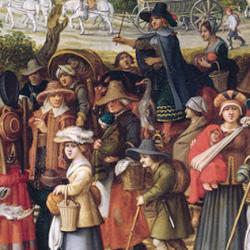Aristide Zolberg argues that the US isn’t a nation of immigrants so much as a Nation By Design. President Kennedy to the contrary: Not a nation of immigrants but a nation of some immigrants. American immigration is not a story of laissez-faire yielding to restrictionism. Openness and restriction have existed together from the beginning.
Zolberg writes, “From the moment they managed their own affairs, well before political independence, Americans were determined to select who might join them, and they have remained so ever since. Immigration policy . . . thus emerged from the outset as a major instrument of nation building, equivalent in the fashioning of the United States to the amalgamation of diverse regions in the making of the United Kingdom, France, or Spain” (1).
America was uniquely a designed nation: “Although as historical constructs all nations in some sense make themselves, the very nature of the immigration process provided the Americans with unusual latitude in doing so, and hence theirs may properly be termed ‘a nation by design’” (1).
In short, “from the very outset, by way of its state and federal governments, the self-constituted American nation not only set conditions for political membership, but also decided quite literally who would inhabit its land. Long before what is conventionally regarded as the beginning of national immigration policy, the Americans undertook to violently eliminate most of the original dwellers, imported a mass of African workers whom they excluded from their nation altogether, actively recruited Europeans they considered suitable for settlement, intervened in the international arena to secure freedom of exit on their behalf, elaborated devices to deter those judged undesirable, and even attempted to engineer the self-removal of liberated slaves, deemed inherently unqualified for membership. Immigration policy not only emerged as a major instrument of American nation-building, but also fostered the notion that the nation could be designed, stimulating the elevation of that belief into an article of national faith” (1-2). That’s a tendentious summary, but it’s accurate enough when stripped of its Tendenz.
The fact that there was no overt federal immigration policy didn’t imply indifference to immigration. Rather, because of states-rights struggles focused on slavery, “immigration policy could only be dealt with at the state level. Indeed, a considerable amount of regulation was enacted by port-of-entry states, amounting in toto to a national immigration policy,” though that legislation was sometimes overturned because it exceeded the authority of particular states (3).















